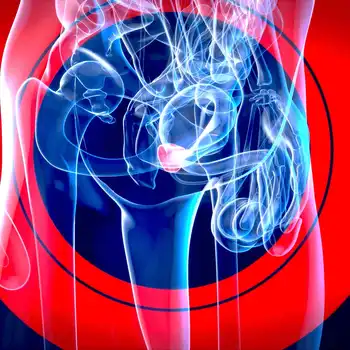
How to Protect YourSkeleton and Avoid Osteoporosis
By:
A Step Toward A better life
On
17/11/2023Summary:
Our bones, the resilient framework that supports our bodies and allows us to move freely, are often taken for granted until they begin to weaken. Osteoporosis, a condition characterized by loss of bone density and increased risk of fractures, affects millions of people worldwide, particularly women over the age of 50. While osteoporosis is not entirely preventable, there are numerous steps you can take to protect your skeleton and minimize your risk of developing this debilitating condition.
Understanding the Dynamics of Bone Health: A Delicate Balance
Bones are dynamic living tissues that undergo a continuous process of remodeling, with bone formation occurring alongside bone resorption. This delicate balance ensures that our bones remain strong and adaptable throughout our lives. Osteoporosis disrupts this balance, leading to a gradual decline in bone density and an increased risk of fractures.
During childhood and adolescence, bone formation outpaces bone resorption, leading to a net increase in bone mass. This period of bone mineralization is crucial for establishing peak bone mass, which serves as a reserve for later years.
As we enter adulthood, bone formation and resorption reach a steady state, maintaining bone density. However, with age, bone resorption gradually outpaces bone formation, leading to a net loss of bone mass. This decline in bone density is particularly pronounced in women after menopause due to hormonal changes.
Factors Contributing to Osteoporosis: Identifying the Risks
Several factors contribute to the development of osteoporosis, increasing the likelihood of bone loss and fractures. Understanding these risk factors is crucial for implementing preventive measures.
Age: Bone density naturally decreases with age, particularly in women after menopause. This age-related decline in bone mass is a primary risk factor for osteoporosis.
Gender: Women are more likely to develop osteoporosis than men due to hormonal changes and lower peak bone mass. Estrogen, a female sex hormone, plays a protective role in bone health. The decline in estrogen levels after menopause contributes to bone loss and osteoporosis.
Family History: A genetic predisposition to osteoporosis increases the risk of developing the condition. If you have close relatives with osteoporosis, you may be at a higher risk.
Diet: Inadequate intake of calcium and vitamin D, essential for bone health, can contribute to bone loss and osteoporosis. Calcium provides the building blocks for bones, while vitamin D aids in calcium absorption.
Lifestyle: Certain lifestyle factors can increase the risk of osteoporosis, including:
Smoking: Smoking impairs bone formation and increases bone resorption.
Excessive alcohol consumption: Excessive alcohol consumption interferes with calcium absorption and can contribute to bone loss.
Physical inactivity: Weight-bearing exercises stimulate bone formation and help maintain bone density. A lack of physical activity increases the risk of osteoporosis.
Certain Medications: Long-term use of certain medications, such as corticosteroids, can contribute to bone loss. Inform your healthcare provider about all medications you are taking, including over-the-counter medications and supplements.
Strategies for Protecting Your Skeletal Health: A Proactive Approach
While osteoporosis is not entirely preventable, there are numerous proactive measures you can take to protect your skeletal health and minimize your risk of developing the condition:
Adequate Calcium Intake: Ensure you are consuming enough calcium, ideally from dietary sources such as dairy products, leafy green vegetables, and fortified foods. Calcium is essential for bone formation and maintenance.
Vitamin D Sufficiency: Vitamin D plays a crucial role in calcium absorption and bone health. Regular exposure to sunlight can help maintain vitamin D levels. If sun exposure is limited, consider vitamin D supplements. Consult your healthcare provider to determine the appropriate dosage for you.
Regular Exercise: Weight-bearing exercises, such as walking, jogging, and dancing, stimulate bone formation and help maintain bone density. Aim for at least 30 minutes of moderate-intensity exercise most days of the week. Engage in activities you enjoy to ensure consistency.
Healthy Weight Management: Maintaining a healthy weight reduces the strain on bones and lowers the risk of osteoporosis. Excess weight can increase the risk of fractures.
Avoid Smoking and Excessive Alcohol Consumption: Smoking and excessive alcohol consumption can impair bone health and increase the risk of osteoporosis. Quitting smoking and reducing alcohol intake can significantly benefit bone health.
Regular Check-ups: Schedule regular check-ups with your healthcare provider to monitor bone health and discuss appropriate screening or preventive measures. Early detection and intervention can help prevent fractures and improve bone health outcomes.

Additional Tips for Enhancing Bone Health: Further Optimizing Skeletal Well-being
In addition to the core strategies mentioned above, here are some additional tips to further enhance your bone health:
Consider Fall Prevention Measures: Falls are a major risk factor for fractures in individuals with osteoporosis. Take precautions to prevent falls, such as:
Ensuring adequate lighting: Bright lighting throughout your home can help you see potential hazards and avoid tripping.
Eliminating tripping hazards: Remove clutter from walkways and install non-slip mats in high-traffic areas.
Using handrails: Handrails can provide support and stability when walking up or down stairs or getting in and out of bed.
Wearing supportive shoes: Shoes with good arch support and traction can help you maintain your balance.
Maintain Proper Posture: Good posture reduces strain on bones and muscles, helping to protect your skeletal health. Be mindful of your posture throughout the day, and correct yourself when you notice yourself slouching.
Engage in Strength Training: Strength training exercises help build muscle mass, which supports bones and reduces the risk of falls. Aim for at least two strength-training sessions per week that focus on all major muscle groups.
Seek Professional Guidance: If you have concerns about your bone health or risk factors for osteoporosis, consult with your healthcare provider or a bone health specialist for personalized recommendations.
Protecting your skeleton and preventing osteoporosis is an ongoing process that begins in childhood and continues throughout adulthood. By adopting healthy lifestyle habits, making informed choices, and seeking guidance when needed, you can empower yourself to maintain strong, healthy bones and enjoy a life of mobility and vitality. Remember, it's never too late to start taking care of your bones. Embrace a proactive approach to bone health and embark on a journey towards a lifetime of skeletal well-being.



